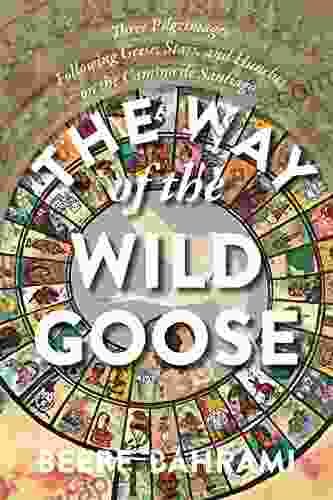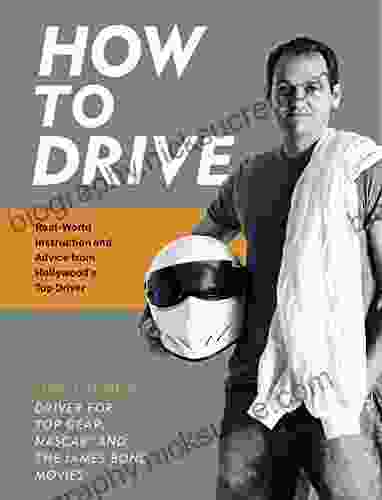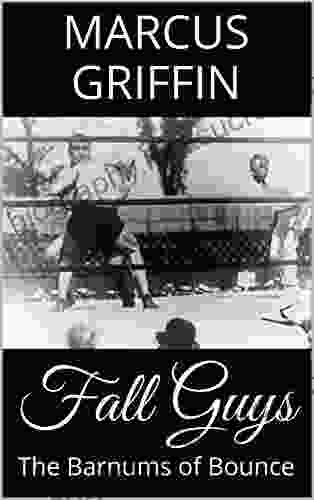Mastering the Art of Tennis: Winning Strategies and Drills to Elevate Your Game

Welcome to the ultimate guide to winning tennis strategies and drills. Whether you're a seasoned pro or just starting out, our comprehensive guide will provide you with the tools and techniques to elevate your game and achieve tennis triumph.
4.5 out of 5
| Language | : | English |
| File size | : | 1469 KB |
| Text-to-Speech | : | Enabled |
| Screen Reader | : | Supported |
| Enhanced typesetting | : | Enabled |
| Word Wise | : | Enabled |
| Print length | : | 225 pages |
We'll cover everything from the basics of serve technique to advanced tactics for court coverage. Along the way, we'll provide drills that you can use to practice and improve your skills.
Chapter 1: The Serve
The serve is one of the most important strokes in tennis. It gives you the opportunity to put your opponent on the back foot and take control of the point. A well-placed serve can also win you free points, so it's essential to master this technique.
Serve Technique
The serve begins with a good grip. The most common grip is the Continental grip, which is used by most professional players. To grip the racket with a Continental grip, place your hand on the handle so that your index knuckle is aligned with the eighth bevel on the handle. Your thumb should be resting on the opposite side of the handle, and your other three fingers should be wrapped around the handle behind your index finger.
Once you have a good grip, you need to stand with your feet shoulder-width apart and your knees slightly bent. Your weight should be distributed evenly on both feet. The racket should be held in front of your body, with the head of the racket pointing towards the ground.
To start the serve, toss the ball into the air about a foot in front of you. As the ball reaches its highest point, swing the racket back and up, keeping your elbow high. When the racket reaches the top of its swing, snap your wrist forward and hit the ball with the center of the racket strings.
Follow through with your swing, bringing the racket head across your body and finishing with the racket head pointing towards the ground.
Serve Drills
- Toss Drill: This drill is designed to help you improve your toss. Simply toss the ball into the air and try to land it in the same spot every time. As you get better, try tossing the ball higher and higher.
- Shadow Serve: This drill is a great way to practice your serve without actually hitting a ball. Simply go through the motions of serving, but don't hit the ball. Focus on keeping your swing smooth and fluid.
- Live Serve: This drill is the most realistic way to practice your serve. Find a partner and take turns serving to each other. As you get better, start to add more variety to your serves, such as changing the speed, spin, and placement.
Chapter 2: Footwork
Footwork is essential for tennis players of all levels. Good footwork allows you to move around the court quickly and easily, which gives you the opportunity to hit the ball in the best possible position. It also helps you to stay balanced and avoid injuries.
Basic Footwork
The basic footwork for tennis is the split step. The split step is a small hop that you take just before your opponent hits the ball. This hop helps you to get your feet set and react to the ball quickly.
To perform the split step, stand with your feet shoulder-width apart and your knees slightly bent. As your opponent hits the ball, hop forward with your left foot (if you are right-handed) or your right foot (if you are left-handed). As you hop, bring your other foot forward and plant it beside your first foot.
Once you have planted your feet, you are ready to move in any direction. To move forward, simply push off with your back foot and step forward with your front foot. To move backward, push off with your front foot and step backward with your back foot.
Advanced Footwork
Once you have mastered the basic footwork, you can start to learn more advanced footwork techniques, such as the cross-court step, the side step, and the backpedaling step.
The cross-court step is used to move from one side of the court to the other. To perform the cross-court step, start by standing with your feet shoulder-width apart and your knees slightly bent. As your opponent hits the ball, hop forward with your left foot (if you are right-handed) or your right foot (if you are left-handed). As you hop, bring your other foot forward and across your body. Plant your foot on the other side of the court, next to your first foot.
The side step is used to move sideways along the court. To perform the side step, start by standing with your feet shoulder-width apart and your knees slightly bent. As your opponent hits the ball, hop sideways with your left foot (if you are right-handed) or your right foot (if you are left-handed). As you hop, bring your other foot sideways and plant it next to your first foot.
The backpedaling step is used to move backward along the court. To perform the backpedaling step, start by standing with your feet shoulder-width apart and your knees slightly bent. As your opponent hits the ball, hop backward with your left foot (if you are right-handed) or your right foot (if you are left-handed). As you hop, bring your other foot backward and plant it behind your first foot.
Footwork Drills
- Cone Drill: This drill is a great way to practice your basic footwork. Set up a row of cones about 5 feet apart. Start at the first cone and perform the split step. As your opponent hits the ball, hop forward to the next cone and perform the split step again. Repeat this process until you reach the last cone.
- Ladder Drill: This drill is a great way to practice your cross-court step and side step. Set up a ladder on the court. Start at one end of the ladder and perform the cross-court step to the other end. Then, perform the side step back to the starting position. Repeat this process until you have completed the ladder.
- Baseline Drill: This drill is a great way to practice your backpedaling step. Stand at the baseline and have your opponent hit balls to you. Backpedal to hit the balls, keeping your feet shoulder-width apart and your knees slightly bent.
Chapter 3: Court Coverage
Court coverage is the ability to move around the court and hit the ball in the best possible position. Good court coverage gives you the opportunity to control the point and force your opponent to make mistakes.
Court Positioning
The first step to good court coverage is to position yourself correctly. When your opponent hits the ball, you should be positioned in the center of the court, facing your opponent. This position gives you the best chance to react to the ball and hit it in the best possible position.
If your opponent is hitting deep shots, you may need to move back to the baseline. If your opponent is hitting short shots, you may need to move up to the net.
Transitioning to the Net
Transitioning to the net
4.5 out of 5
| Language | : | English |
| File size | : | 1469 KB |
| Text-to-Speech | : | Enabled |
| Screen Reader | : | Supported |
| Enhanced typesetting | : | Enabled |
| Word Wise | : | Enabled |
| Print length | : | 225 pages |
Do you want to contribute by writing guest posts on this blog?
Please contact us and send us a resume of previous articles that you have written.
 Fiction
Fiction Non Fiction
Non Fiction Romance
Romance Mystery
Mystery Thriller
Thriller SciFi
SciFi Fantasy
Fantasy Horror
Horror Biography
Biography Selfhelp
Selfhelp Business
Business History
History Classics
Classics Poetry
Poetry Childrens
Childrens Young Adult
Young Adult Educational
Educational Cooking
Cooking Travel
Travel Lifestyle
Lifestyle Spirituality
Spirituality Health
Health Fitness
Fitness Technology
Technology Science
Science Arts
Arts Crafts
Crafts DIY
DIY Gardening
Gardening Petcare
Petcare Deanna Roy
Deanna Roy Thomas Lumley
Thomas Lumley Ryan A Pedigo
Ryan A Pedigo John C Norcross
John C Norcross Richard Harris
Richard Harris Lew Freedman
Lew Freedman Richard J Dewhurst
Richard J Dewhurst Crystal Duffy
Crystal Duffy Beau Miles
Beau Miles Dan R Lynch
Dan R Lynch Barbara Kennard
Barbara Kennard Daniel J Barrett
Daniel J Barrett Sam Kean
Sam Kean Daniel M Koretz
Daniel M Koretz Percy Boomer
Percy Boomer Becca Anderson
Becca Anderson St Louis Post Dispatch
St Louis Post Dispatch Scott Malthouse
Scott Malthouse Catherine M Cameron
Catherine M Cameron Charles Buist
Charles Buist Guy P Harrison
Guy P Harrison Jenny Chandler
Jenny Chandler Stanislas Dehaene
Stanislas Dehaene Jennifer Traig
Jennifer Traig Charlie Shamp
Charlie Shamp Howard Zinn
Howard Zinn Erica Schultz
Erica Schultz W Hamilton Gibson
W Hamilton Gibson Rhonda Belle
Rhonda Belle Mykel Hawke
Mykel Hawke Tami Anastasia
Tami Anastasia Jack Andraka
Jack Andraka Lynn Rosen
Lynn Rosen Ping Li
Ping Li Mina Lebitz
Mina Lebitz David A Bogart
David A Bogart Arnold G Nelson
Arnold G Nelson Nancy E Willard
Nancy E Willard Barry Glassner
Barry Glassner Ben Sedley
Ben Sedley Helen Kara
Helen Kara Laura Ingalls Wilder
Laura Ingalls Wilder Emma Brockes
Emma Brockes Jesse Liberty
Jesse Liberty J Bruce Brackenridge
J Bruce Brackenridge Cynthia Levinson
Cynthia Levinson Mike Swedenberg
Mike Swedenberg Boy Scouts Of America
Boy Scouts Of America Jade Barrett
Jade Barrett Barzin Pakandam
Barzin Pakandam Graham Farmelo
Graham Farmelo Craig Lambert
Craig Lambert Justin Sirois
Justin Sirois Colleen Alexander Roberts
Colleen Alexander Roberts Rick Joyner
Rick Joyner Peter Wacht
Peter Wacht Richard Meadows
Richard Meadows Baruch Englard
Baruch Englard Graham R Gibbs
Graham R Gibbs Geert Hofstede
Geert Hofstede Martin Dugard
Martin Dugard David Klausmeyer
David Klausmeyer Sampson Davis
Sampson Davis R L Medina
R L Medina Robin Knox Johnston
Robin Knox Johnston Jessica Smartt
Jessica Smartt Karen Bush
Karen Bush David Burch
David Burch Basudeb Bhatta
Basudeb Bhatta Maha Alkurdi
Maha Alkurdi J Michael Veron
J Michael Veron Rachelle Zukerman
Rachelle Zukerman Jessica F Shumway
Jessica F Shumway Roanne Van Voorst
Roanne Van Voorst Steve Biddulph
Steve Biddulph Peter K Tyson
Peter K Tyson Barry Johnston
Barry Johnston Lily Collins
Lily Collins Max Marchi
Max Marchi Steve Burrows
Steve Burrows Eliza Reid
Eliza Reid Jake Anderson
Jake Anderson Cindy Post Senning
Cindy Post Senning Charles River Editors
Charles River Editors Linnea Dunne
Linnea Dunne C R Hallpike
C R Hallpike Barbara Mertz
Barbara Mertz Steven Hawthorne
Steven Hawthorne Julie Buxbaum
Julie Buxbaum Barbara Ann Kipfer
Barbara Ann Kipfer Oliver T Spedding
Oliver T Spedding Jutta Schickore
Jutta Schickore Jude Currivan
Jude Currivan Rob Pope
Rob Pope Siddhartha Rao
Siddhartha Rao Charlotte Browne
Charlotte Browne Elizabeth Lockwood
Elizabeth Lockwood Clifford Herriot
Clifford Herriot Brandon Royal
Brandon Royal S E Hinton
S E Hinton Eddie Merrins
Eddie Merrins Diane Musho Hamilton
Diane Musho Hamilton Timothy Pakron
Timothy Pakron Bryan Peterson
Bryan Peterson Buddy Levy
Buddy Levy Jay Abramson
Jay Abramson John Henry Phillips
John Henry Phillips Cait Stevenson
Cait Stevenson Joanna Hunt
Joanna Hunt Susan Nance
Susan Nance Kenneth Wilgus Phd
Kenneth Wilgus Phd Ascencia
Ascencia Breanna Hayse
Breanna Hayse Jeffrey Jensen Arnett
Jeffrey Jensen Arnett Donald R Gallo
Donald R Gallo Erik J Brown
Erik J Brown Larry Dane Brimner
Larry Dane Brimner David Jamieson Bolder
David Jamieson Bolder Joseph Epes Brown
Joseph Epes Brown Dacher Keltner
Dacher Keltner James Randi
James Randi Mick Conefrey
Mick Conefrey Burt L Standish
Burt L Standish Betty Stone
Betty Stone Richard Scott
Richard Scott Scott Reed
Scott Reed Dustin Salomon
Dustin Salomon S K Gupta
S K Gupta Wanda Priday
Wanda Priday Nick Townsend
Nick Townsend Robert A Baruch Bush
Robert A Baruch Bush David Aretha
David Aretha Debra Kilby
Debra Kilby Jamie Margolin
Jamie Margolin Yuval Noah Harari
Yuval Noah Harari Alastair Hannay
Alastair Hannay James Duthie
James Duthie Tara Brach
Tara Brach T H White
T H White James Koeper
James Koeper Ellen Notbohm
Ellen Notbohm Stephen K Sanderson
Stephen K Sanderson Nicholas Wolterstorff
Nicholas Wolterstorff Ron Lemaster
Ron Lemaster Leah Cullis
Leah Cullis Rachel Smith
Rachel Smith Scott Westerfeld
Scott Westerfeld Dr Craig Malkin
Dr Craig Malkin Constanze Niedermaier
Constanze Niedermaier Meghan L Marsac
Meghan L Marsac Stefan Ecks
Stefan Ecks Tori Day
Tori Day John G Robertson
John G Robertson Molly E Lee
Molly E Lee Mark Mayfield
Mark Mayfield F William Lawvere
F William Lawvere Gary Lincoff
Gary Lincoff Barbara Neiman
Barbara Neiman Susan Dennard
Susan Dennard Diane Cardwell
Diane Cardwell Barry Burd
Barry Burd David Cockburn
David Cockburn Julian I Graubart
Julian I Graubart Editors Of Southern Living Magazine
Editors Of Southern Living Magazine Helen Fisher
Helen Fisher Lawrence Baldassaro
Lawrence Baldassaro Nicole Martin
Nicole Martin David Thomas
David Thomas Janna Levin
Janna Levin Mackenzi Lee
Mackenzi Lee Gordon H Chang
Gordon H Chang Chris Bennett
Chris Bennett Nick Bollettieri
Nick Bollettieri Mike Massie
Mike Massie Mark Rashid
Mark Rashid Bridget Flynn Walker Phd
Bridget Flynn Walker Phd Patrick Sweeney
Patrick Sweeney Thomas French
Thomas French Hunbatz Men
Hunbatz Men Basu Shanker
Basu Shanker Kit Yates
Kit Yates Cara Koscinski
Cara Koscinski Glenna Mageau
Glenna Mageau Michael Palin
Michael Palin Tim Marshall
Tim Marshall Paul Van Lierop
Paul Van Lierop Jen Houcek
Jen Houcek Benita Bensch
Benita Bensch Victor Seow
Victor Seow Allan V Horwitz
Allan V Horwitz Rachel Morgan
Rachel Morgan Philip Maffetone
Philip Maffetone Shannon Reilly
Shannon Reilly Alexandra Andrews
Alexandra Andrews Christine Kenneally
Christine Kenneally Jaymin Eve
Jaymin Eve Stephen J Bavolek
Stephen J Bavolek Danny Staple
Danny Staple Reprint Edition Kindle Edition
Reprint Edition Kindle Edition Jean Smith
Jean Smith Yang Kuang
Yang Kuang Lynn Mann
Lynn Mann Kara Tippetts
Kara Tippetts Jean Illsley Clarke
Jean Illsley Clarke Beebe Bahrami
Beebe Bahrami Christopher L Heuertz
Christopher L Heuertz Craig Romano
Craig Romano Pearson Education
Pearson Education Richard Chun
Richard Chun Casey Watson
Casey Watson Sport Hour
Sport Hour Joanne Glenn
Joanne Glenn Barbara Taylor
Barbara Taylor Joseph Schmuller
Joseph Schmuller Brad Burns
Brad Burns Babu The Panda
Babu The Panda Joshua G Shifrin
Joshua G Shifrin Linda Welters
Linda Welters David Taylor
David Taylor James M Collins
James M Collins Conor Nolan
Conor Nolan Laura Pavlov
Laura Pavlov Michael Wood
Michael Wood Noah Brown
Noah Brown Beth Miller
Beth Miller Visual Arts
Visual Arts Stephanie Fritz
Stephanie Fritz Gabriyell Sarom
Gabriyell Sarom Rob Hutchings
Rob Hutchings Sean Mcindoe
Sean Mcindoe Barbara Rogoff
Barbara Rogoff David Beaupre
David Beaupre Harvey Wittenberg
Harvey Wittenberg Ray Comfort
Ray Comfort Anthony Edwards
Anthony Edwards Malcolm Hebron
Malcolm Hebron Dr Michael P Masters
Dr Michael P Masters Erica B Marcus
Erica B Marcus John Sandford
John Sandford Toby A H Wilkinson
Toby A H Wilkinson Sam Nadler
Sam Nadler Hongyu Guo
Hongyu Guo Bruce Pascoe
Bruce Pascoe Vanessa Garbin
Vanessa Garbin Kathleen Masters
Kathleen Masters Muhammad Zulqarnain
Muhammad Zulqarnain Macauley Lord
Macauley Lord Khurshed Batliwala
Khurshed Batliwala Kate Darling
Kate Darling Bernard Marr
Bernard Marr Margaret Owen
Margaret Owen Barry Rhodes
Barry Rhodes Farley Mowat
Farley Mowat Ralph Galeano
Ralph Galeano Kindle Edition
Kindle Edition Richard H Immerman
Richard H Immerman Smart Reads
Smart Reads Chris Mooney
Chris Mooney Titus M Kennedy
Titus M Kennedy John Garrity
John Garrity Sam Cowen
Sam Cowen Melissa Haag
Melissa Haag Rob Rains
Rob Rains Barry Friedman
Barry Friedman Chase Hill
Chase Hill Mike Commito
Mike Commito Mia Scotland
Mia Scotland David Abram
David Abram Charlotte Booth
Charlotte Booth Pavla Kesslerova
Pavla Kesslerova Rachel Dash
Rachel Dash P J Agness
P J Agness Scarlett Thomas
Scarlett Thomas Holger Schutkowski
Holger Schutkowski Candice Davie
Candice Davie Marco Grandis
Marco Grandis Scott Mactavish
Scott Mactavish Mark Twain
Mark Twain Jonathan Kellerman
Jonathan Kellerman John Whitman
John Whitman Jeremy Sweet
Jeremy Sweet Roy Porter
Roy Porter Jenna Helland
Jenna Helland Daniel S Lobel Phd
Daniel S Lobel Phd Matt Taddy
Matt Taddy Thomas Bulfinch
Thomas Bulfinch Mary A Fristad
Mary A Fristad Randy Baker
Randy Baker Autumn Carpenter
Autumn Carpenter Achille Rubini
Achille Rubini Geoffrey Finch
Geoffrey Finch Rebecca Solnit
Rebecca Solnit Sergei Urban
Sergei Urban Edith Grossman
Edith Grossman Mitch Prinstein
Mitch Prinstein Bill Milliken
Bill Milliken Ryan Higa
Ryan Higa Peter Martin
Peter Martin Monica Hesse
Monica Hesse Chris Eberhart
Chris Eberhart V B Alekseev
V B Alekseev Bob Holtzman
Bob Holtzman Yuki Mano
Yuki Mano Leon Mccarron
Leon Mccarron Charles Soule
Charles Soule Jim Fay
Jim Fay Otto Scharmer
Otto Scharmer Prince Asare
Prince Asare Hill Gates
Hill Gates Bb
Bb Lewis Thomas
Lewis Thomas Kate Williams
Kate Williams Carlo Collodi
Carlo Collodi Daniel P Huerta
Daniel P Huerta Christopher Taylor Ma Lmft
Christopher Taylor Ma Lmft Rowan Jacobsen
Rowan Jacobsen Frederick Douglass Opie
Frederick Douglass Opie Joshua Hammer
Joshua Hammer Chiara Sparks
Chiara Sparks Ron Avery
Ron Avery Mike Stanton
Mike Stanton Robin Mcmillan
Robin Mcmillan Robert Ardrey
Robert Ardrey Beau Bradbury
Beau Bradbury Nicholas Sparks
Nicholas Sparks Violet Moller
Violet Moller Jennifer Estep
Jennifer Estep Marie Rutkoski
Marie Rutkoski Emma Walker
Emma Walker Print Replica Kindle Edition
Print Replica Kindle Edition Leslie Stager
Leslie Stager Eugene V Resnick
Eugene V Resnick Sara Shepard
Sara Shepard Steven Bell
Steven Bell Brian Switek
Brian Switek James Syhabout
James Syhabout Jim Wharton
Jim Wharton Rebecca Rupp
Rebecca Rupp Chadd Vanzanten
Chadd Vanzanten Tom Miller
Tom Miller Elizabeth George Speare
Elizabeth George Speare Jane Hardwicke Collings
Jane Hardwicke Collings Simon Spurrier
Simon Spurrier Jane Butel
Jane Butel Massimo Cossu Nicola Pirina
Massimo Cossu Nicola Pirina Gordon Witteveen
Gordon Witteveen Marc Loy
Marc Loy James C Radcliffe
James C Radcliffe Shmuel Peerless
Shmuel Peerless Craig Martin
Craig Martin Isabel Fonseca
Isabel Fonseca W Scott Elliot
W Scott Elliot Catherine J Allen
Catherine J Allen Dr Faith G Harper
Dr Faith G Harper Bobbie Faulkner
Bobbie Faulkner Temple West
Temple West Spencer Wells
Spencer Wells Bashir Hosseini Jafari
Bashir Hosseini Jafari Dave Karczynski
Dave Karczynski Gerald Beaudry
Gerald Beaudry Bonnie Tsui
Bonnie Tsui Mark H Newman
Mark H Newman Samantha Fitts
Samantha Fitts Marshall Jon Fisher
Marshall Jon Fisher Valerie Pollmann R
Valerie Pollmann R Martin Sternstein
Martin Sternstein Nina Manning
Nina Manning James Duggan
James Duggan John Aldridge
John Aldridge Eric Franklin
Eric Franklin Jack Newman
Jack Newman Suzanne Leonhard
Suzanne Leonhard Leonard M Adkins
Leonard M Adkins Michelle Rigler
Michelle Rigler Mark Kurlansky
Mark Kurlansky Richard Weissbourd
Richard Weissbourd Fabien Clavel
Fabien Clavel Elliott Vandruff
Elliott Vandruff Reelav Patel
Reelav Patel Paul Doiron
Paul Doiron Ben Collins
Ben Collins Melissa Gomes
Melissa Gomes Blair Braverman
Blair Braverman Proper Education Group
Proper Education Group Arny Alberts
Arny Alberts Grey Owl
Grey Owl Emily Chappell
Emily Chappell Catherine Shainberg
Catherine Shainberg Jeff Alt
Jeff Alt Mike High
Mike High Kara Goucher
Kara Goucher Pat Shipman
Pat Shipman David Starbuck Smith
David Starbuck Smith Cary J Griffith
Cary J Griffith Dustin Hansen
Dustin Hansen Chris Cage
Chris Cage Kenton Kroker
Kenton Kroker Susan Scott
Susan Scott Suzanne Wylde
Suzanne Wylde Tim Ingold
Tim Ingold Jenn Mcallister
Jenn Mcallister John J Robinson
John J Robinson Kam Knight
Kam Knight Barbara Bassot
Barbara Bassot Barry Rabkin
Barry Rabkin Leia Stone
Leia Stone Nichole Carpenter
Nichole Carpenter John D Barrow
John D Barrow John H Mcwhorter
John H Mcwhorter Jill Brown
Jill Brown Bill Mckibben
Bill Mckibben Sam Harris
Sam Harris Barbara Illowsk
Barbara Illowsk Bagele Chilisa
Bagele Chilisa Barry J Kemp
Barry J Kemp Chuck Missler
Chuck Missler Dave Rearwin
Dave Rearwin Vanessa Ogden Moss
Vanessa Ogden Moss Clayton King
Clayton King Barbara Russell
Barbara Russell Farzana Nayani
Farzana Nayani Jayanti Tambe
Jayanti Tambe John Kimantas
John Kimantas Cheryl Erwin
Cheryl Erwin Monta Z Briant
Monta Z Briant Debbie M Schell
Debbie M Schell Jonathan Bergmann
Jonathan Bergmann Brian Gilbert
Brian Gilbert Shayla Black
Shayla Black Ronald Wheeler
Ronald Wheeler Lock Gareth
Lock Gareth Denton Salle
Denton Salle Ernie Morton
Ernie Morton Donald Frias
Donald Frias Sharon Dukett
Sharon Dukett William H Frey
William H Frey Ben Povlow
Ben Povlow Steven Rinella
Steven Rinella Hollis Lance Liebman
Hollis Lance Liebman John Lister Kaye
John Lister Kaye T C Edge
T C Edge Luke Gilkerson
Luke Gilkerson Ben Goldacre
Ben Goldacre Trish Kuffner
Trish Kuffner Eric Engle
Eric Engle Robert Hogan
Robert Hogan Nick Neely
Nick Neely Wayne B Chandler
Wayne B Chandler Ellen Lewin
Ellen Lewin Mark Ellyatt
Mark Ellyatt Diane Yancey
Diane Yancey Ryan T White
Ryan T White Robin Nixon
Robin Nixon Ian Leslie
Ian Leslie Kyle Butler
Kyle Butler William Wasserman
William Wasserman Master Gamer
Master Gamer John Quick
John Quick Gary Soto
Gary Soto Vincent Bossley
Vincent Bossley Dan Golding
Dan Golding Barbara Gastel
Barbara Gastel James Kilgo
James Kilgo Nadine Hays Pisani
Nadine Hays Pisani Jennifer Pharr Davis
Jennifer Pharr Davis Mike Allison
Mike Allison Jeff Belanger
Jeff Belanger Joseph Alton M D
Joseph Alton M D Mark Young
Mark Young Edwin R Sherman
Edwin R Sherman J C Cervantes
J C Cervantes Daniel T Willingham
Daniel T Willingham Fred Mitchell
Fred Mitchell George Macdonald
George Macdonald Eric Leiser
Eric Leiser Julie L Spencer
Julie L Spencer William Byers
William Byers Stan Tekiela
Stan Tekiela Ken Xiao
Ken Xiao Linda Carroll
Linda Carroll Mike Loades
Mike Loades Janis Keyser
Janis Keyser Gay Robins
Gay Robins Edward Lee
Edward Lee
Light bulbAdvertise smarter! Our strategic ad space ensures maximum exposure. Reserve your spot today!

 Chris ColemanThe Connecting Game: A Powerful Tool for Self-Discovery and Transformation by...
Chris ColemanThe Connecting Game: A Powerful Tool for Self-Discovery and Transformation by...
 Harold PowellThe Bowl of Light: A Transcendent Experience in the Heart of the Amazonian...
Harold PowellThe Bowl of Light: A Transcendent Experience in the Heart of the Amazonian...
 Clarence BrooksIndigenous Research Methodologies: Decolonizing Knowledge Production with...
Clarence BrooksIndigenous Research Methodologies: Decolonizing Knowledge Production with... Devin CoxFollow ·3.9k
Devin CoxFollow ·3.9k Anton FosterFollow ·6.4k
Anton FosterFollow ·6.4k Angelo WardFollow ·12.7k
Angelo WardFollow ·12.7k Bryce FosterFollow ·5k
Bryce FosterFollow ·5k Wesley ReedFollow ·17.7k
Wesley ReedFollow ·17.7k Chadwick PowellFollow ·15.9k
Chadwick PowellFollow ·15.9k Reed MitchellFollow ·5k
Reed MitchellFollow ·5k John SteinbeckFollow ·17k
John SteinbeckFollow ·17k

 Israel Bell
Israel BellEmbark on an Epic 160-Mile Expedition for Charity on the...
Prepare yourself for an...

 Josh Carter
Josh CarterThe Way of the Wild Goose: A Journey of Embodied Wisdom...
The Way of the Wild Goose is an ancient...

 Allen Parker
Allen ParkerMastering the Art of Bean Fly Casting: A Comprehensive...
Fly fishing,...

 Aaron Brooks
Aaron BrooksSolving the Homework Problem by Flipping the Learning
What is flipped...

 Fletcher Mitchell
Fletcher MitchellThe Jane Butel Library: A Renewed Source of Knowledge and...
The Jane Butel...
4.5 out of 5
| Language | : | English |
| File size | : | 1469 KB |
| Text-to-Speech | : | Enabled |
| Screen Reader | : | Supported |
| Enhanced typesetting | : | Enabled |
| Word Wise | : | Enabled |
| Print length | : | 225 pages |








